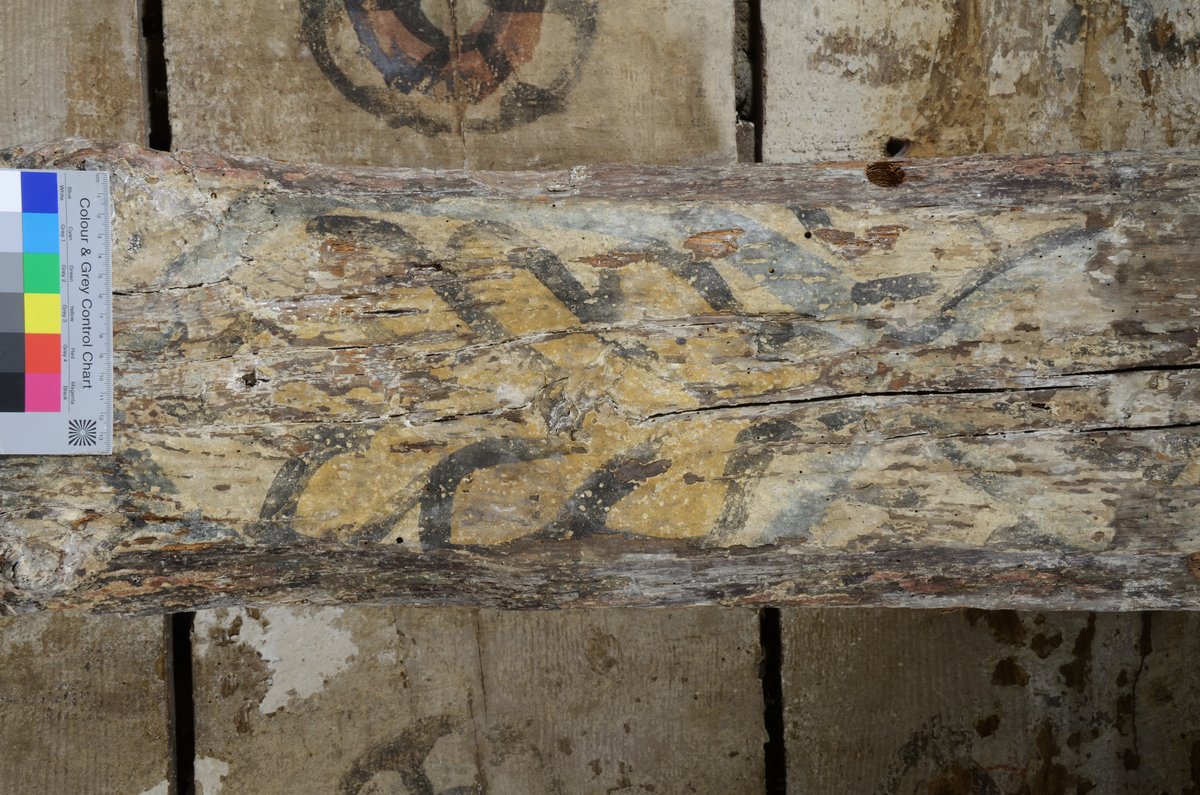Julia Hurlbeck
The technical art of polychromy in urban buildings before 1350 AD in German-speaking areas

Already at the end of the 19th century it was well known that medieval town houses as well as churches were decorated with colored paintings. At that time, as well as today, such evidence for the decoration of residential, commercial and economic chambers appeared during remodeling and demolition works. However, they were not examined, documented and preserved to the same extent as the monumental and art-historically highly regarded murals in sacred rooms.
This dissertation project aims for the first time to provide an overview of the still rich but poorly publicized extant secular polychromy up to the year 1350. All findings - from the simplest of paintings and glazes to sheer ornamentation and figural representations - are taken into account to pursue the most accurate and comprehensive picture possible of the designs of these rooms. In order to obtain this goal, the method leads to the collection and examination of used materials and execution techniques of these objects. Subsequently this creates a statistically evaluable amount of data in comparison to principally single studies, which were up until now looked upon in isolation.
The intention of this project is to consistently consider detailed questions of the medieval painting technique. Amongst other factors, the preparation of the undercoat, the construction aids and the layering will be taken into account. In contrast to conventional monument recording, the intention is to substantiate investigations by scientific analysis techniques according to the graduate program Rahmenwechsel (Changing Frames). A presentation of the art technology of the secular interior polychromy could therefore provide the basis to answer the questions about differences to sacred room design, the range of materials, craft practice and the craftsmen from this period.
Personal Data
Julia Hurlbeck studied conservation and restoration of mural paintings and architecture polychromy in the master's program of the University of Applied Sciences Erfurt. Parallel to her freelance work as a restorer, she was part of the joint DFG project of TU Berlin (Dr.-Ing. Barbara Perlich) and FH Erfurt (Prof. Dr. Christoph Merzenich) from 2015 to 2018 "Ein hochmittelalterlicher jüdischer Wohn- und Handelskomplex und seine Raumfassung" as a research associate. From this task the topic for her dissertation project evolved. As part of the multidisciplinary DFG project of the University Bonn and TU Berlin under the direction of Prof. Dr. Wolter-von dem Knesebeck and Dr.-Ing. habil. Barbara Perlich "Das Haus in der Stadt vor 1300" she will write her dissertation at the art history institute of the University Bonn.
| Supervisory Team | |
|---|---|
| Primary Supervisor | Prof. Dr. Harald Wolter-von dem Knesebeck, Universität Bonn |
